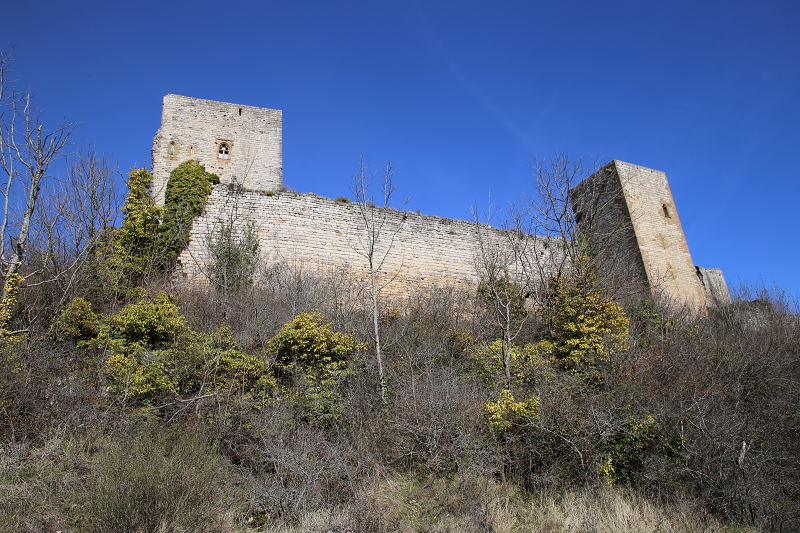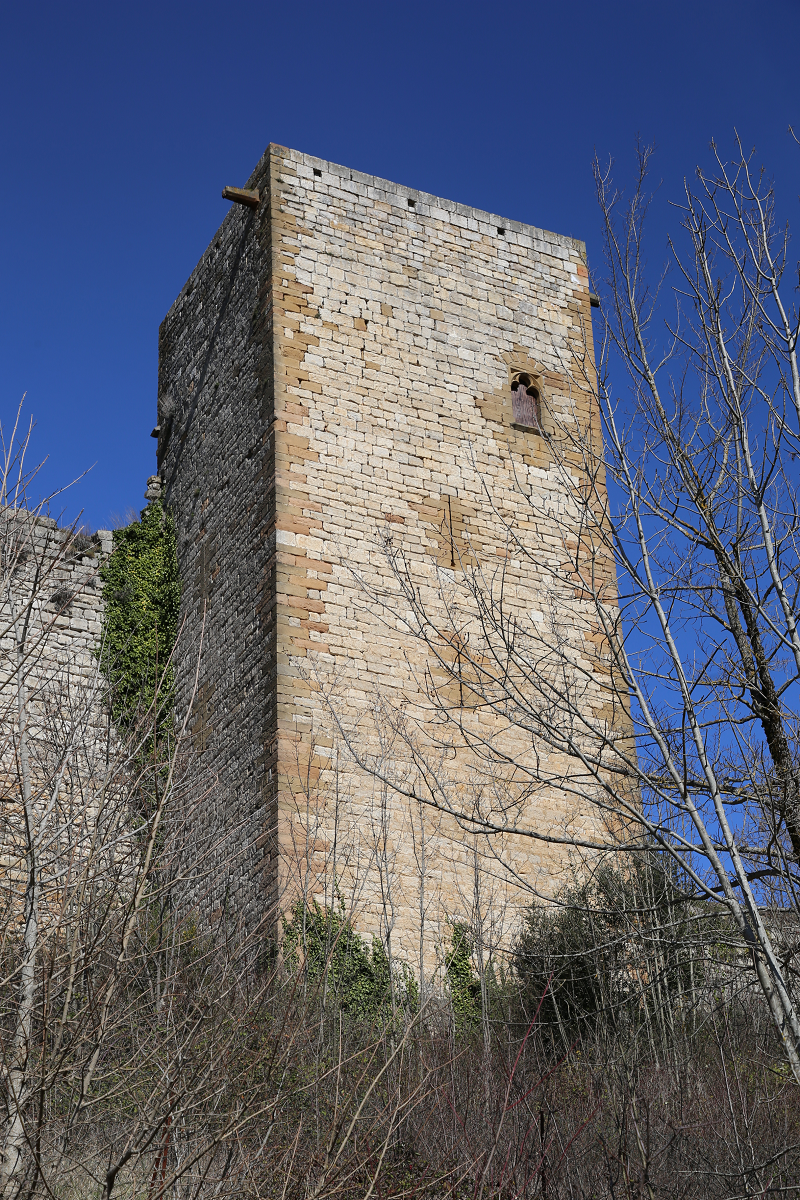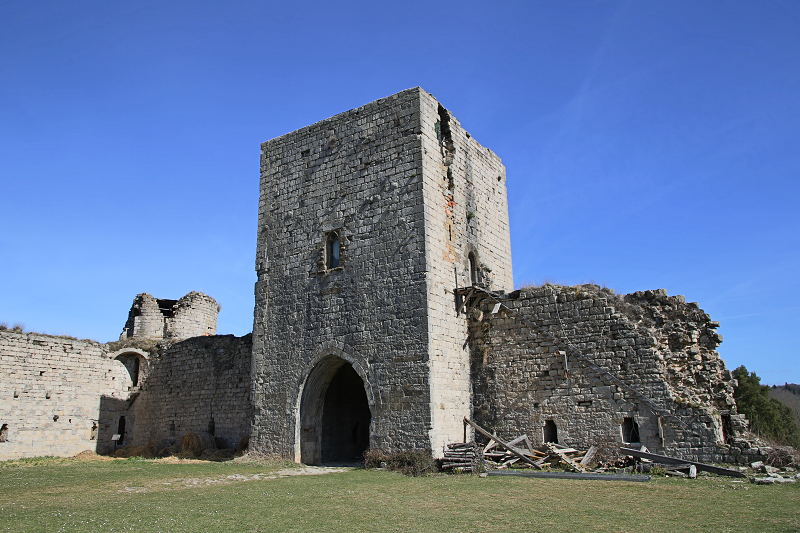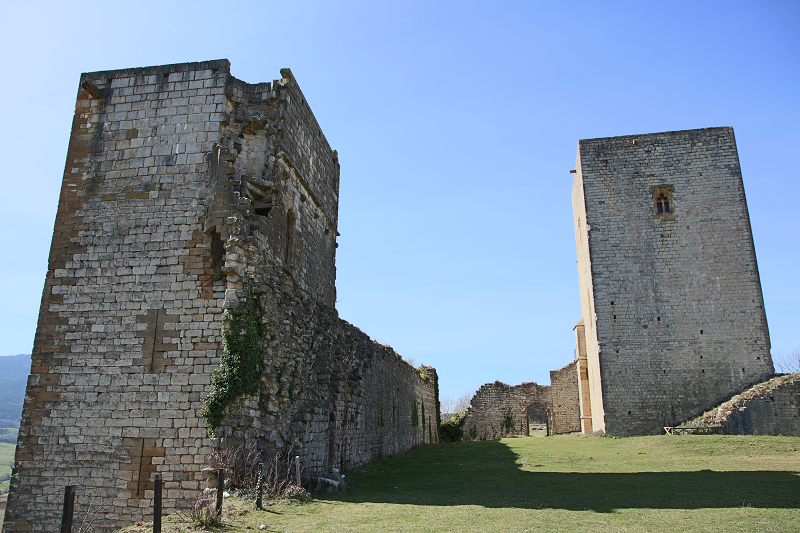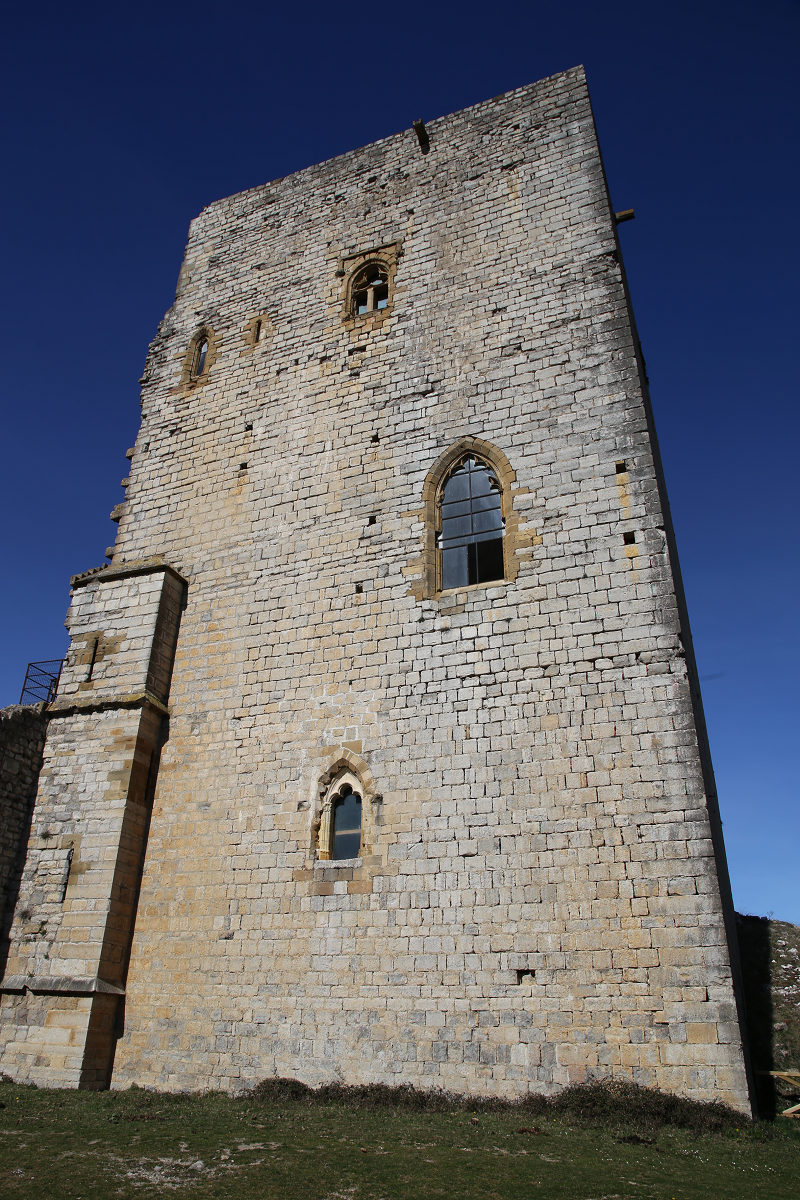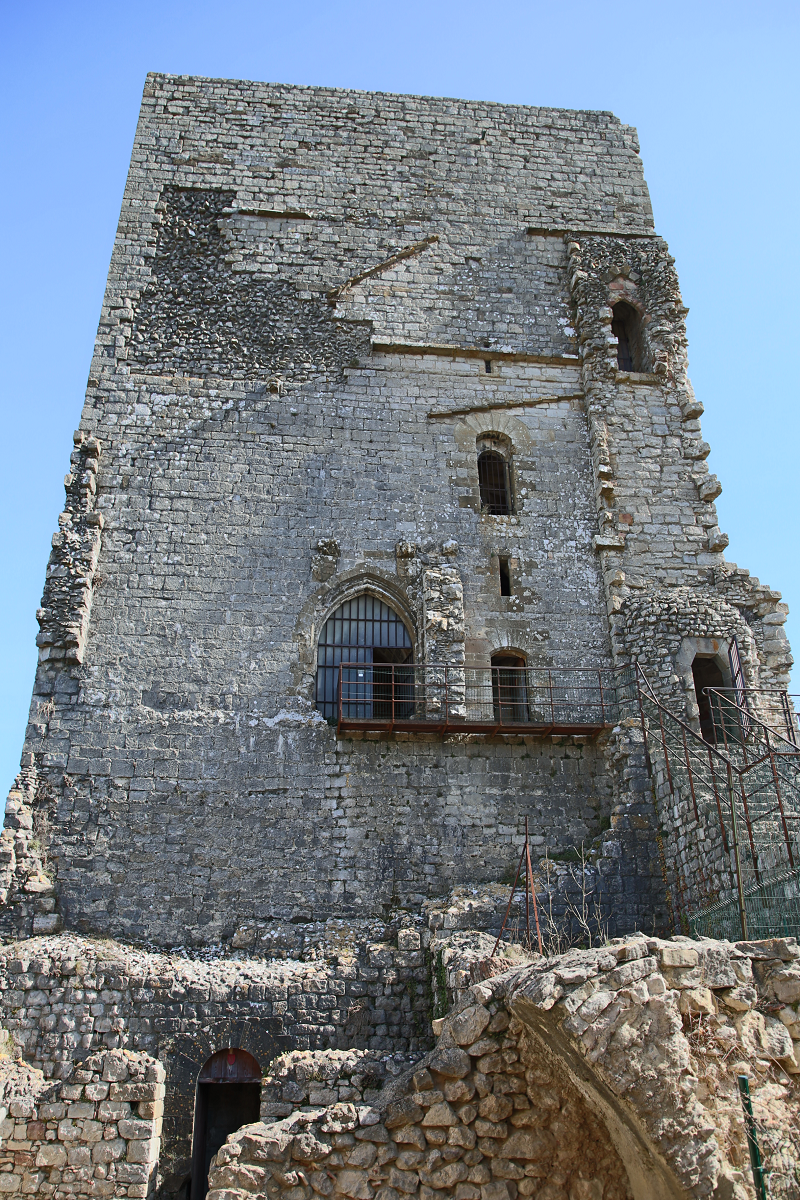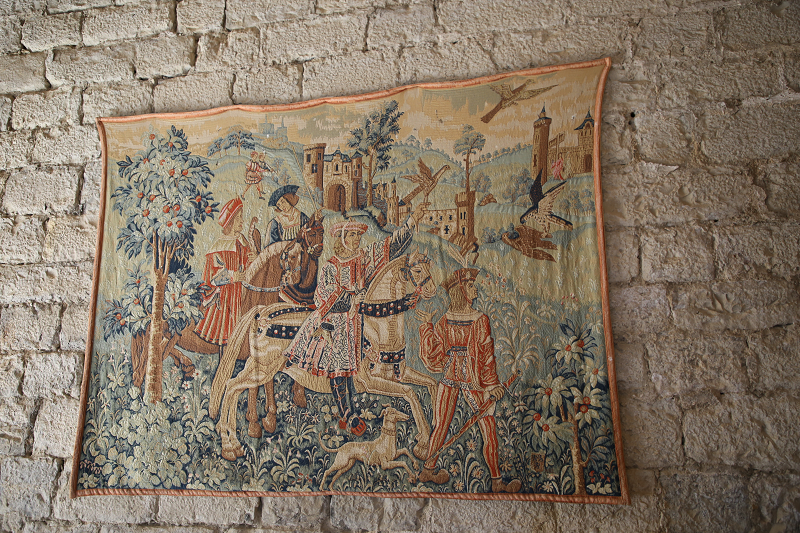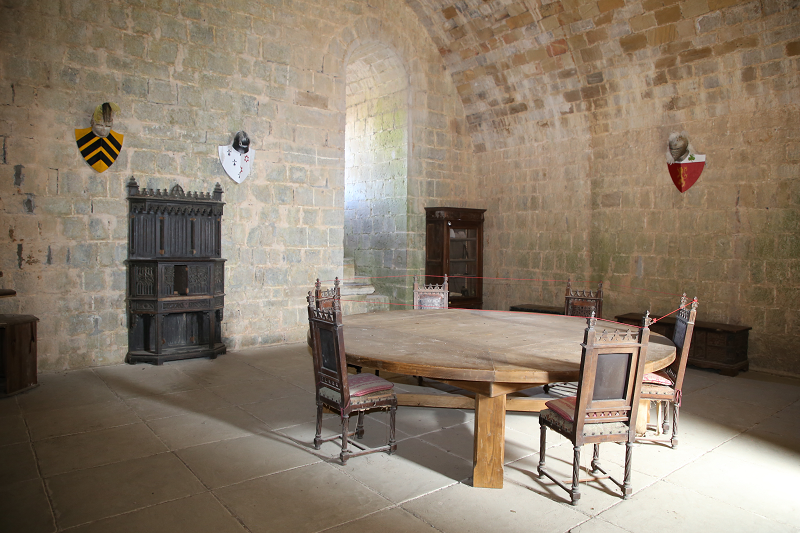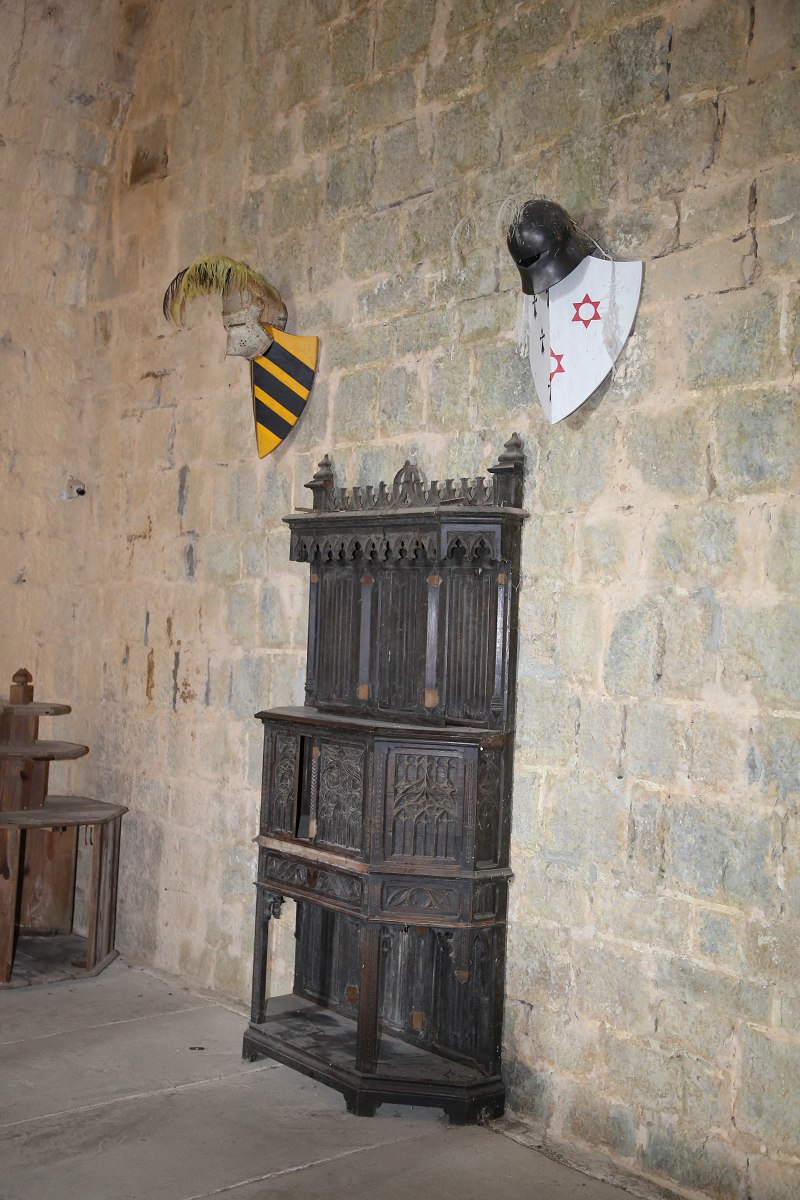The Puivert Castle (Languedocien: Castèl de Puègverd) is a Cathar castle located in the Puivert commune, in the Aude Department (Occitania, France). The castle has the status of being a monument of the history of the French Ministry of Culture since 1907, remaining the main and true indication of the French architecture style expansion in Languedoc.
Of all the castle buildings from the first half of the 14th century this castle (fr. Le château de Puivert), of course, is considered to be one of the most well preserved. When you visit the castle there is a feeling that time has stopped. Serenity, harmony, quiet, strength and elegance are the feelings that can be felt when walking on its territory.
The Castle is located on top of a hill at an altitude of 605 meters, towering above the village and lake. Its length is 175 meters. The entrance to the courtyard is through the square tower, located in the center of the eastern wall.
In addition to the main entrance, there are also two additional ones located at the corner entrance from the North-West side and the gate on the South side.
The castle’s inside walls total area is 3200 sq. m.
The castle has five towers in total.
The Castle’s History
The construction of the present castle dates back to the 12th century. From the same period, Puivert was closely linked with the name of the famous troubadour Peire d’Alvernha, which was designated the earliest troubadour, referred to by name in the Divine Comedy by Dante.
The first mention of the castle was made in 1170 when it belonged to Lord Congost’s family before the Albigensian Crusade (1209-1229). This family practiced catharism and was accused of blasphemy, like all heretics. The castle was sieged in November 1210. The battle under the command of Thomas Pons de Bruyères-le-Châtel, lieutenant de Simon de Montfort, lasted for three days, after which “the center of heresy” (it is how conquerors called the castle) fell.
The castle became the property of the northern barons after the expulsion of the Lord’s family. There are only a few fragments of the wall in the east that have been preserved since this date.
Thomas de Bruyère, (the grandson of Pons), and his wife (Isabelle de Melun) built a new castle to the east of the old one at the beginning of the 14th century. The Coat of arms of Isabelle de Melun, daughter of the grand chamberlain of France, can still be seen.
Events are often held in the castle. One of the most memorable is the “On the Troubadour Trail” holiday, combining the tour with a story about the history and architecture of the castle, with medieval troubadour songs accompanied by flute and drum. The tour starts at 15:00, between May to August inclusive.
Each summer the tour falls on the following dates: May, Sunday 19 and 26; June, Sunday, 2, 9, 16, 30 July – Monday 15, 22, 29 and Wednesday, 3, 10, 17, 24, 31, as well as Thursday 4, 11, 18, 25 and Sunday 7, 14, 21, 28; in August – Monday 5, 12, 19, Wednesday, 7, 14, 21, Thursday – 1, 8, 15, 22 and Sunday – 4, 11, 18, 25.
There is an outdoor exhibition at certain times, devoted to the topic of medieval traditions of needlework (weaving and spinning), and speeches about spinning and weaving in Languedoc in the 13th century, presentations of books on this topic, as well as lectures on the topic of the catharism origin and history of this religion.
One of the interesting places to visit in the castle is the “Salle des Musiciens” that is the musician’s hall. Here, many musical instruments from bygone times are stored like the lute, bagpipe, psalterion, tambourine and portative organ. Each musical instrument is stored separately, allowing visitors to view it from all angles.
The psalterion is the rarest musical instrument in this collection. The state allocated a grant for two masters (Julian Cuvilliez and Audrey Lecorgne) to study it from L’Atelier Skald in 2013.
There is another interesting historical fact. Nicolas Poussin, the French artist, and one of the founders of the classicism painting, created “Arcadian Shepherds”, his most enigmatic picture in 1638.
Art historians put forward the hypothesis that the artist made the first sketches of his painting from the top of the Puivert castle. This is confirmed by the fact that Nicolas Poussin visited the castle in 1635 or 1636. The “Arcadian Shepherds” painting dates from the year 1638 and is kept in the Louvre. Ollivier Ruca is the author of this hypothesis, the arguments can be found at the author’s site: www.o-ruca.fr (contact: [email protected]).
How to get to?
From Paris: 7 hr 52 min (797 km) via A20
From Toulouse: 1 hr 36 min (119 km) via A66
From Andorra: 2 hr 5 min (104 km) via D613
From Barcelona: 3 hr 26 min (279 km) via AP-7
From Madrid: 8 hr 6 min (761 km) via A-2
From Monaco: 5 hr 41 min (551 km) via A8
From Moscow: 35 hr (3,481 km) via E30/M1
From Belgrade: 18 hr 4 min (1,855 km) via E70
From Istanbul: 28 hr (2,804 km) via E70
From Bern: 7 hr 47 min (810 km) via A9
Opening hours:
From December 15th until Easter weekend: every day from 10:00 to 17:00. It is closed on Saturdays except for during the school holidays.
From the Easter weekend until November 15th: every day from 9:00 until 19:00.
The annual closing: from November 15th to December 15th
Prices:
Adult: 5€ (individual)
Children (from 5 to 12 years) 3€
See here Pyrenees travel guide
See here France travel guide
See here Spain travel guide



